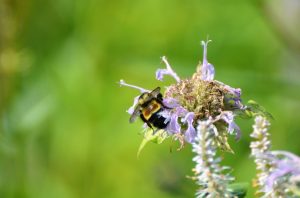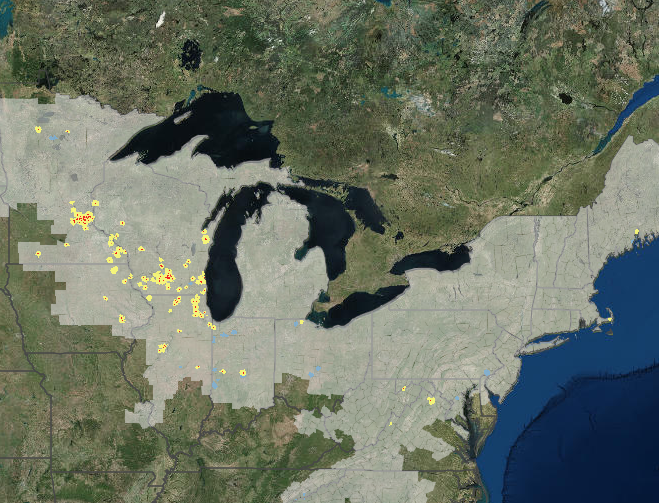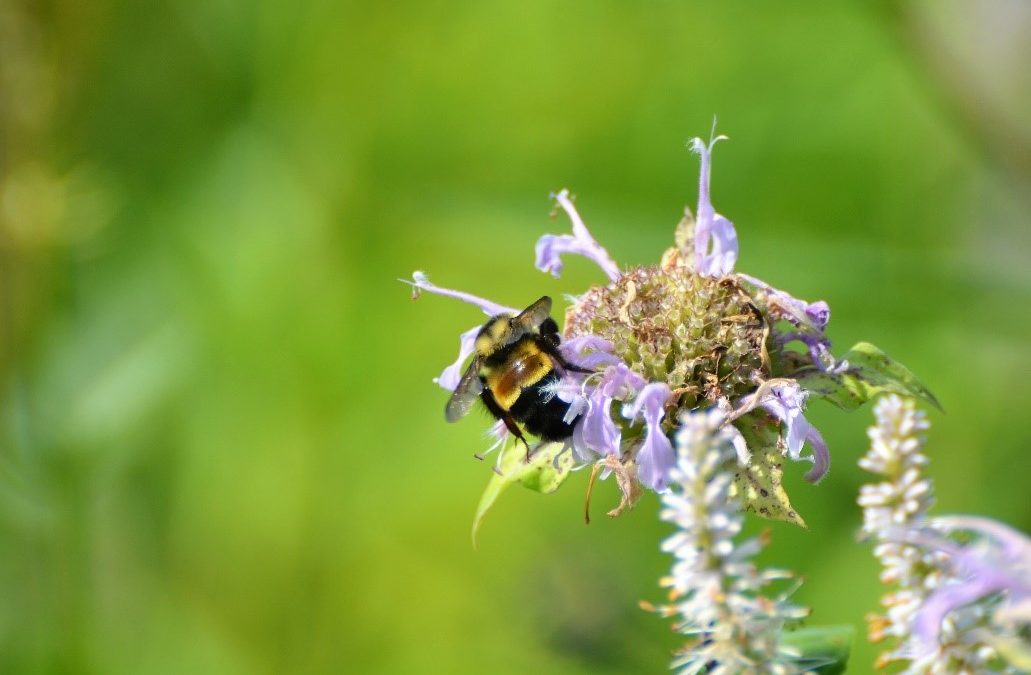One of the newest additions to the Endangered Species Act is found right here in Wisconsin: the rusty patched bumble bee (Bombus affinis) was added to the Endangered Species List on March 21, 2017, making it the first bee in history to be designated as an endangered species.

Rusty patched bumble bee. Photo by Jay Watson, WDNR.
Wisconsin’s importance to the rusty patched bumble bee
The rusty patched bumble bee is one of 50 bumble bees found in North America. Bumble bees are important pollinators, and are the primary pollinator for several important agricultural crops. They rely on an abundance of diverse flowering plant species found in prairies, woodlands, marshes and wetlands, agricultural landscapes, and residential parks and gardens.
Rusty patched bumble bee populations began to quickly decline in the 1990’s and 2000’s. Now, the rusty patched is now only found in less than 1 percent of its historic range. The causes of the significant decrease in the population are unknown, but likely include a mix of factors such as habitat loss, pesticide use, pathogens, disease, and climate change.
However, scientists in Wisconsin have exciting news to report: in 2017, the rusty patched bumble bee was found in six new counties in Wisconsin, expanding its known range and demonstrating that Wisconsin is one of the last strongholds for this endangered bee.
“Bumble bees like the rusty patched are important pollinators for many economically important crops, gardens, orchards, prairies, woodlands and wetlands,” explains Jay Watson, terrestrial invertebrate specialist with the Wisconsin Department of Natural Resources. “They play a critical role in the transfer of pollen from flower to flower which many plant species are dependent upon, resulting in fruit and seed production that provides food for other wildlife and helps to maintain a healthy ecosystem.”

Map of rusty patched bumble bee sightings. Photo courtesy of US Fish and Wildlife Service.
Help save the rusty patched bumble bee
Now that the rusty patched is designated under the Endangered Species Act, the bee will benefit from protections in place including site-specific protections, designation of critical habitat, and development of species recovery plans.
However, one of the most important keys to successfully recovering this species will be from the efforts of individuals to provide suitable habitat in their yard. Here’s how you can get involved:
- Make a donation. Support our pollinator conservation efforts in Wisconsin. Visit WisConservation.org/Donate to donate today.
- Provide habitat. Plant native flowers in your yard, including flowering trees and shrubs that are in bloom from spring through fall. Check out U.S. Fish & Wildlife Service’s list of plants favored by the rusty patched bumble bee, and the Wisconsin DNR’s native plant lists. Leave areas of your yard unmowed in summer, and unraked in fall. In some areas of your garden, leave standing plant stems in the winter to provide a safe place for bumble bees to build their nest and overwinter.
- Provide a pesticide- and disease-free environment. Pesticides and insecticides can harm pollinators. Neonicotinoids – a group of insecticides commonly used on farms and in urban landscapes – kill bees.
- Report findings. Think you found a rusty patched bumble bee? Report it to Bumble Bee Watch.
- Learn more. Learn more about the rusty patched bumble bee in this video, “A Ghost in the Making”.
- Join us in the field! We have a special Field Trip all about the rusty patched bumble bee, and other opportunities to learn about pollinators. Learn more and register.
Contributed by Caitlin Williamson, NRF Director of Conservation Programs
